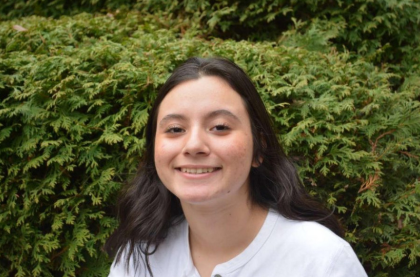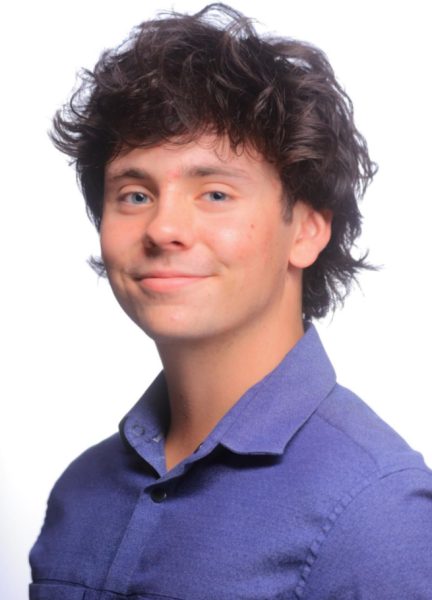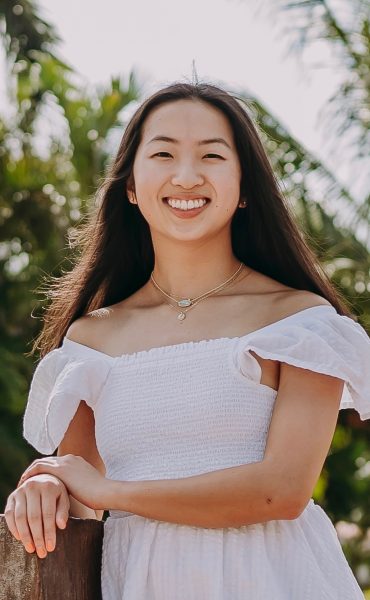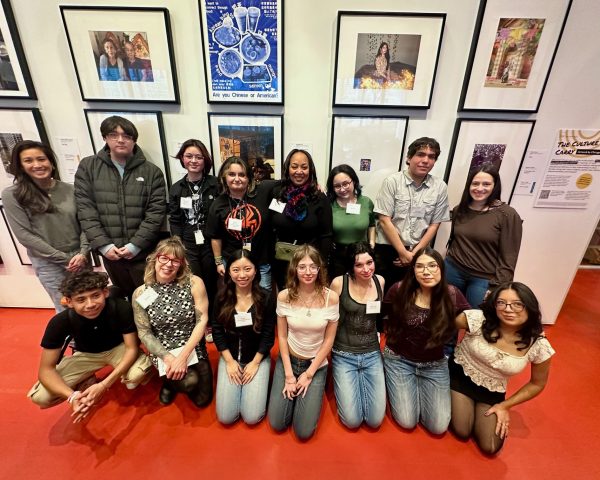STEM Fair opens doors for students interested in science
Students began putting the finishing touches on their poster boards while Mrs. Young made sure that everything from the rubrics used to grade the students to the food provided for the judges was organized and ready to go. For many students, the second week of December is a signal that Christmas break is near, but for the Alpha department, it means that the Winter STEM Fair, held on Dec. 10, is right around the corner.
According to Mrs. Young, the STEM Fair Coordinator and Alpha Honors Chemistry teacher, Lane was one of the first schools in the city to do STEM fairs and has continued to do so since the 70s. Because of these fairs, a former biology teacher started the Alpha program in the 80s in order to prepare students who were interested in participating and as a way to teach them more about scientific research.
This year, Nicole Sandu, Div. 252, won first place with her project, “The Effect of Deforestation on Globator growth.” Michael Puczko, Div. 052, came in second with his project titled “The Effect of pH on Antibiotic Efficacy.” In third place was Edwin Rong, Div. 257, with his project, “The Effect of Antioxidants on Banana Capacitance.”
The top ten projects of the Dec. 10 fair will advance to the Regional Science Fair that starts on March 1 and ends on March 3. If a participant receives a score above 80, they will get the chance to compete in the Exhibition of Student STEM Research, Young said. After that comes the Illinois Junior Academy of Science Exposition, and finally The International Science and Engineering Fair in Anaheim, California.
Since the fair is a highly competitive event, Alpha teachers aid students to make sure that they do their best with all the different requirements and details of their project, according to Mr. Nordlund, an Alpha English teacher.
Nordlund teaches students how to do scientific research effectively and how to write their papers in APA format.
While Nordlund takes on the writing aspect of the fair, Young helps students by providing them with the materials that they need for their experiment and procedure.
Apart from having Alpha teachers to help them out, students also are required to find a sponsor that will guide them throughout the process.
Natasha Gonzalez, Div. 156, an Alpha student who participated in the fair during her freshman and sophomore years, said that having a sponsor during her first year provided her with the needed assistance to successfully execute her project. Ms. Reichelt, a neuroscience and biology teacher, was able to help Gonzalez out with her project, “The Effect of Filter Type on Element Amount in Tap Water.”
“I was really confused about a couple of things, but she was really helpful and was able to get me the testing materials that I needed to collect data,” Gonzalez said.
Although the fair is only a requirement for freshmen and sophomores in the Alpha program, there are still few juniors and seniors who voluntarily compete.
Puczko and Gabriele Ron, Div. 158, are part of that group of students. To them, the fair is much more than a required grade.
Puczko started doing the fair because it was mandatory during his first year in Alpha but participating helped him figure out that he had a love and passion for science, making it something that he wants to pursue as a career.
“When it was required, it was a nuisance because I knew that I had to do it for a grade,” Puczko said. “By sophomore year that mentality of ‘I have to do this for a grade’ was pretty much gone and it was more of ‘I am doing this for fun.’”
Ron, who has participated in the fair since his freshman year, won first place in the engineering category of the fair last year, was the first runner up of the International Science and Engineering Fair 2019, and placed in the top ten again in this year’s school-level fair. Ron said he believes that the fair not only helps him follow his passion for science, but also allows him to get to know a group of people with whom he shares interests.
Young also finds the community and camaraderie among the students to be her favorite part of the fair.
“The last few weeks you’ll come to my room and there are students working on their projects but they’ll have their friends there,” Young said. “It is a nice way for them to get along.”
Students continue to do the fair because of their love for science and the welcoming environment that it fosters, but they have also noticed that the fair has helped them develop skills that they can benefit from in the future.
“I have learned how to research a lot better,” Puczko said.“That is one big skill that has helped me. I think that it’ll continue to be a good thing for me throughout college.”
Even though the fair is a competition, Nordlund finds it to be an event that every participant can benefit from, encouraging students to learn from their mistakes and to use any feedback for guidance.
“Just have more questions because those are the things that can inspire new work down the road,” Nordlund said. “Even just learning the critical process of this and subjecting your work for evaluation to teachers and judges in the field is huge.”
Your donations directly fund the Lane Tech student journalism program—covering essential costs like website hosting and technology not supported by our school or district. Your generosity empowers our student reporters to investigate, write, and publish impactful stories that matter to our school community.
This website is more than a publishing platform—it's an archive, a research tool, and a source of truth. Every dollar helps us preserve and grow this resource so future students can learn from and build on the work being done today.
Thank you for supporting the next generation of journalists at Lane Tech College Prep!

Stephanie is a senior in her second and final year with The Champion (formerly The Warrior). As a member of Glee Club, she loves to sing and jam out to...



